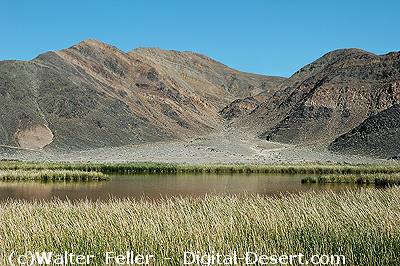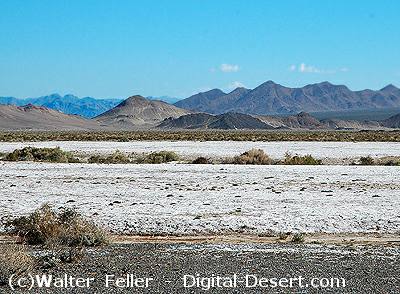Prehistoric Cultures in the Death Valley Region
Saratoga Springs Period, A.D. 500–1200
During this period, large village sites, such as Saratoga Springs in Death Valley, were developed. The settlement pattern in these places appears to have shifted from a circulating pattern of temporary camps to one with more specialized camps radiating outward from the larger habitation sites.In the northern Mojave, from Death Valley to the Sierra Nevada, the sites of the Saratoga Springs period appear to exhibit cultural continuity with the Gypsum period being most apparent the reduction in size of projectile points as a result of the introduction of the bow and arrow. Changes in subsistence systems cannot be adequately identified, but reduction in mammal hunting, such as deer, in the northern Mojave may be postulated. During the Saratoga Springs period, there appears to be a refinement of adaptation to the arid environment of the northwest Mojave, and presumably the beginnings of the eastward expansion across the Mojave of Numic-speaking groups, who were the ancestors of the historic Shoshone and Paiute who inhabited the eastern California desert region at the time of Euro-American contact.
Essentially, the same assemblage was present across the Mojave Desert north of the Mojave River. However, Basketmaker-Pueblo influences increased with Anasazi occupation of the lower Virgin and Muddy Rivers. Research suggests that the Anasazi controlled turquoise mines near Halloran Spring in the east-central Mojave between about A.D. 700 and 900, followed by Hakataya peoples who withdrew about A.D. 1200-1300. Finally, the Southern Paiute utilized the area in late prehistoric times. The mining of turquoise resulted in Anasazi influence in much of the eastern Mojave, because small parties of these Virgin and Muddy River villagers used the region for intermittent and seasonal foraging. The extent of these forays has not been determined, but it appears to have been considerable, particularly in well-watered areas such as Las Vegas Valley, Ash Meadows, and the Spring Mountains. The area of this influence can be mapped by the distribution of Anasazi sherds occurring in considerable frequency at sites in southern Nevada and in California as far west as the Cronise Basin, west of Soda Lake. Anasazi influence set the eastern Mojave apart from the remainder of the desert.
(source - NPS)

Saratoga Springs

Saratoga Springs